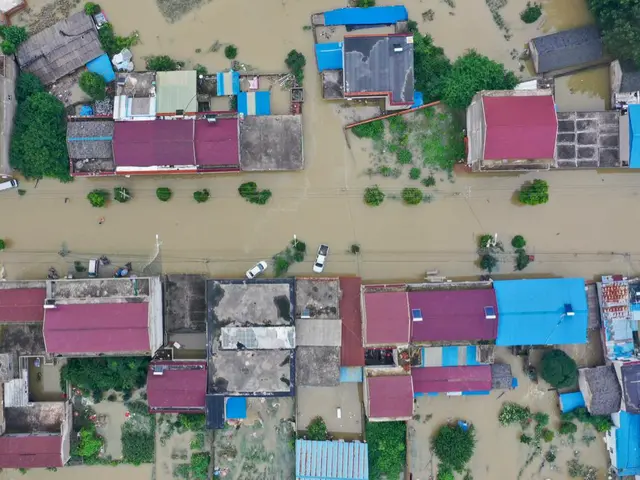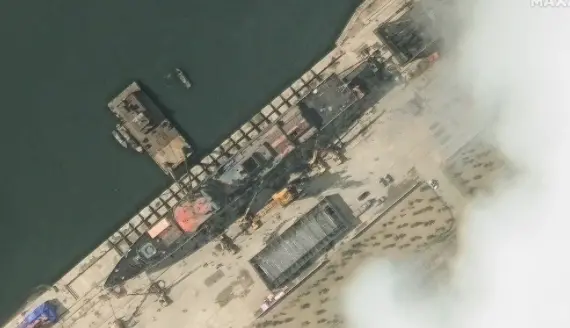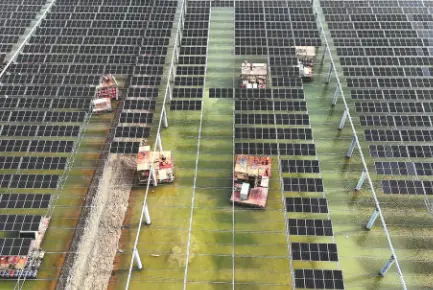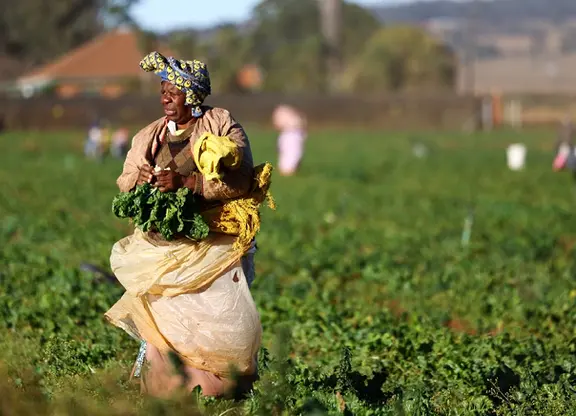Zheng Jichao, 72, has witnessed flooding for more than 10 times in his life. This time, he is not as worried as he used to be.
"Unlike in the past, when floodwater toppled houses and cut off our drinking water supply, now we have new homes with the reinforced road, water and toilet facilities," said Zheng.
Living near the Huaihe River in Funan County, east China's Anhui Province, Zheng is one of 195,000 residents living on "zhuangtais," residential areas on raised ground in the Mengwa flood buffer zone. Created in 1953, the zhuangtais, about five meters high, are on naturally occurring low hills or artificially built earth platforms to protect villagers in case of floods.
Thanks to the efforts of the local government in recent years, which included relocating some of the residents and improving the infrastructure with an investment of around 800 million yuan (115.7 million U.S. dollars), the zhuangtais have become better homes that shelter local residents.
Zheng lives on the Zhengtaizi Zhuangtai in Wangjiaba Township, one of the 77 zhuangtais scattered in the middle of the Mengwa flood buffer zone.
On July 20, three days after the river's first flood of the year following torrential rains, spillways at the major hydrological station of Wangjiaba were opened in a move to reserve capacity in flood zones.
Some 375 million cubic meters of water was discharged into the buffer zone, inundating local farmland and turning zhuangtais into isolated islets.
The move was taken to alleviate the pressure from both the upper reaches and downstream sections of the swollen Huaihe River.
The Huaihe River originates in central China's Henan Province and traverses some 1,000 km through several provinces, including Shandong, Anhui and Jiangsu. It used to flood a vast area of land, mainly in Anhui Province, every three to four years on average.
During the flood this year, the local government shipped daily living supplies regularly and cadres and doctors were stationed to help with local affairs, such as material distribution, health services and sterilization.
"We have plenty of rice, flour and vegetables," said Zheng, pointing at a giant bag of flour next to the refrigerator.
Zheng said with a much better living environment and life necessities provided, they are not so afraid of flooding as they used to be. "Life here is not affected much, except that the farmland has been all inundated."
As compensation for the losses, villagers were granted 7,500 yuan (about 1,083 U.S. dollars) per hectare of damaged farmland, and the amount may vary based on the actual value of the losses.
Seedlings, such as cabbages, sweet potatoes and green onions, were provided free of charge so that farmers could plant them after the water receded. The government has also offered the use of farming machines and fertilizers free of charge.
On the Xitianpo Zhuangtai in Caoji Township, a parking lot, a public toilet, a square and a major concrete road have been built since 2018.
"The zhuangtai used to be so crowded that a tricycle was unable to get through. Villagers had to wait in lines to go to the shabby latrine every morning," said Cao Bao, 35, a former villager.
Cao moved down the zhuangtai to start a shipping business several years ago. "Although I have bought an apartment in town, I prefer living on zhuangtai due to the quiet surroundings and improved environment," he said.
On hearing that his hometown had been besieged by floods this year, Cao decided to return and do something.
He drove seven hours back home with 50 boxes of instant noodles, 25 boxes of milk and 25 boxes of bottled porridge. The materials were carried by boat to the zhuangtai and delivered to villagers.
"When I was young, I thought the rising waters were 'fun,' without realizing that the floods could ruin a whole year's toil on the part of my fellow villagers. Now that I have accumulated some wealth, I'd like to make a contribution to my hometown," he said.
 简体中文
简体中文












